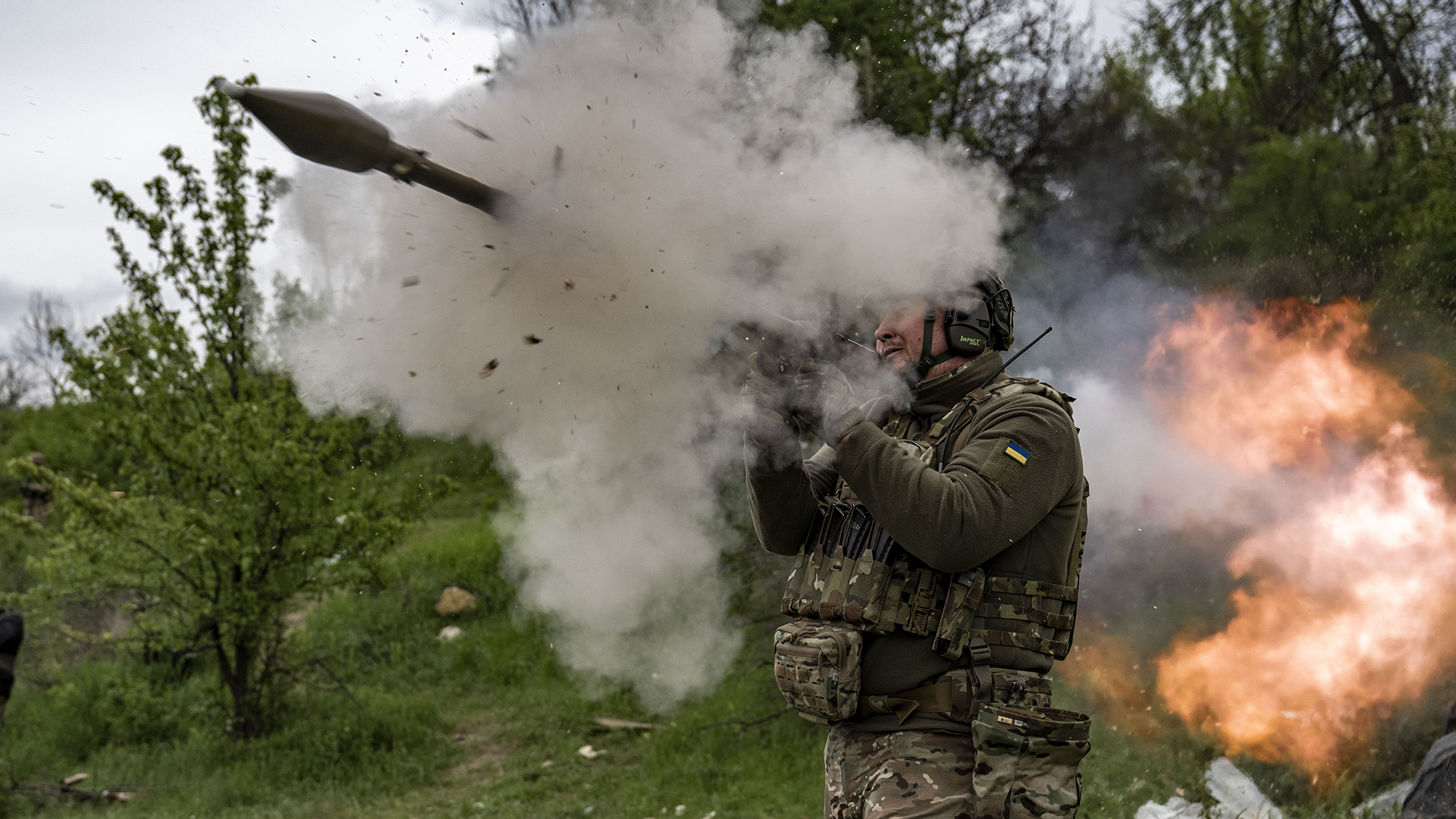

Ukrainian forces have made incremental gains in the face of determined Russian resistance in the two days since Ukrainian President Volodymyr Zelensky announced on June 10 that his country’s spring offensive was underway.
Ukrainian officials say they have recaptured seven villages in the Donetsk region of the country so far including Storozhov, which the Russians had occupied since March 2022. Ukraine’s Deputy Defense Minister Hanna Mailar made the claim on Telegram on Monday.
“Over the past week, during the offensive operation in the Donetsk and Tavriysk operational areas: The advance of the troops of the offensive group was 6.5 km,” Maliar wrote on Telegram “The area of the territory taken under control is 90 [square kilometers].”
She later announced that Ukrainian forces had taken another 16 square kilometers near Bakhmut.
Subscribe to Task & Purpose Today. Get the latest military news and culture in your inbox daily.
John Kirby, a National Security Council spokesman, declined to provide an appraisal of the Ukrainian offensive on Monday.
“We’re going to refrain from providing an armchair assessment of this offensive,” Kirby told reporters during a White House news conference. “Combat is happening. There is no question about that. But it’s up to President Zelensky to characterize it, not us. And it’s certainly going to be up to the Ukrainian armed forces to speak to give and take on any given day. It’s war.”
So far, the Ukrainians have launched offensive operations in several operations across a 600-mile front: In the Western Zaporizhian region, along the administrative border between Donetsk and Zaporizhia region, in the Bakhmut area, and south of Kreminna in Luhansk region, according to the Institute for the Study of War, or ISW, a non-partisan think tank in Washington, D.C.
“Ukrainian forces liberated several towns, but claims of a Ukrainian ‘breakthrough’ are premature at this time,” ISW wrote in its June 11 assessment of the war.
Ukrainian troops are carrying out a difficult tactical operation without air superiority, according to ISW’s June 10 assessment. But these initial assaults do not indicate what future Ukrainian operations will look like.
“The Russian military remains dangerous and Ukrainian forces certainly face a hard fight, but Ukraine has not yet committed the vast majority of its counteroffensive forces and Russian defenses are not uniformly strong along all sectors of the front line,” ISW wrote.
Among the losses Ukraine has suffered in the early fighting appears to be newly-arrived Western equipment. videos have been posted on social media that purportedly show damaged, abandoned or destroyed military equipment that Ukraine has received from the west, including at least one German-made Leopard tank and U.S.-made Bradley Fighting Vehicles.
It is unsurprising that the Ukrainians are taking casualties because they are attacking against some of the best prepared Russian defenses in Ukraine, according to the ISW assessment.

“However, initial attacks – and particularly selected footage that Russian sources are intentionally disseminating and highlighting – are not representative of all Ukrainian operations,” according to ISW.
Right now, Ukrainian troops are probing Russian front lines, looking for weak spots that can be exploited later, said retired Air Force Gen. Philip Breedlove, who served as head of U.S. European Command and Supreme Allied Commander Europe of NATO Allied Command Operations from 2013 to 2016.
“I think they’re tiring to find that seam, much like the old [Soviet] 1st Operational Maneuver Group in the Warsaw Pact days would do: It presses hard, finds out where the cracks are, and then bores the thrust through those cracks,” Breedlove told Task & Purpose.
Russian engineers have spent the last several months preparing formidable defenses intended to make it as difficult as possible for Ukrainian troops to advance, Breedlove said.

It is far too early to tell how well Ukraine’s offensive is unfolding, especially since their heaviest forces have not yet been committed to the battle, Breedlove said.
“This is not going to be the Charge of the Light Brigade with flags and brandished swords in the breeze and riding into Russians,” Breedlove said. “It’s not. It’s going to be a hard fight and I think they’re in the front edge of that fight, where they’re trying to find out where the gaps are going to be. We should be patient and see what happens when they put their heavy forces in the battle.”
It is hard to tell at this point how well the Russians are doing at repelling the Ukrainian offensive because it is not yet clear where and when the main Ukrainian effort will take place, said retired Army Col. Gian Gentile, a senior historian with the RAND Corporation.
In some ways, this weekend’s action in Ukraine is analogous to the early days of the D-Day landings in World War II, The Ukrainian offensive needs time to develop before observers will be able to say if it has made significant progress, just as the success of the D-Day landings became apparent afterward, Gentile told Task & Purpose.
“Once that foothold was established by the end of the day on June 6, even if it was about 15 kilometers closer to the channel than the plan had called for, after that foothold was secured there was never any doubt that the Allies invasion would ultimately evict the Germans from France and force it to surrender,” Gentile said.
The latest on Task & Purpose
- Navy fires commander of destroyer USS Stout
- Wagner mercenaries capture Russian brigade commander
- Marines want to use Tomahawks to sink enemy ships from 1,000 miles away
- Marine Corps names new top enlisted leader
- Marine Corps drops charges against lance corporal who spent 113 days in the brig
